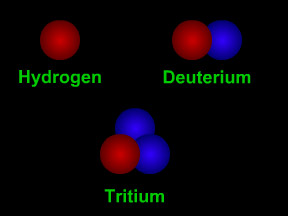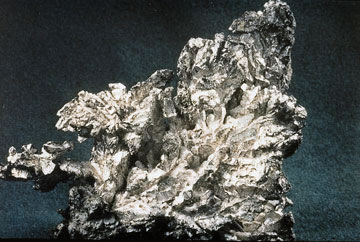Tiny variations in silver are giving scientists a new look at Earth's timetable.
Image Courtesy of U.S. Geological Survey
Silver Tells a Story of Early Earth: Water Here Since Planet's Very Early Days
A new study shows that water might have been present very early in the formation of Earth. Before this new information, scientists thought water came to Earth from comets.
Scientists have learned this by studying isotopes found in meteorites and rocks from the Earth. They looked into how long ago it was that rocks on Earth contained elements such as hydrogen, carbon, nitrogen, and silver.
Richard Carlson, one of the authors of the study, said, "We found that the silver isotope ratios in mantle rocks from the Earth exactly matched those in primitive meteorites."
The addition of material such as carbon, nitrogen, and water could have occurred in a single event like the giant collision between the early Earth and an object the size of Mars that probably caused the formation of Earth's moon.
You might also be interested in:

Isotopes are different "versions" of an element. All atoms of an element have the same number of protons. For example, all hydrogen atoms have one proton, all carbon atoms have 6 protons, and all uranium
...more
Meteors are streaks of light, usually lasting just a few seconds, which people occasionally see in the night sky. They are sometimes called "shooting stars" or "falling stars", though they are not stars
...more
An element (also called a "chemical element") is a substance made up entirely of atoms having the same atomic number; that is, all of the atoms have the same number of protons. Hydrogen, helium, oxygen,
...more
There is more nitrogen gas in the air than any other kind of gas. About 4/5ths of Earth's atmosphere is nitrogen gas! A molecule of nitrogen gas is made up of two nitrogen atoms. There are other molecules
...more
Scientists have learned that Mount Hood, Oregon's tallest mountain, has erupted in the past due to the mixing of two different types of magma. "The data will help give us a better road map to what a future
...more
The Earth's mantle is a rocky, solid shell that is between the Earth's crust and the outer core, and makes up about 84 percent of the Earth's volume. The mantle is made up of many distinct portions or
...more
Some geologic faults that appear strong and stable, slip and slide like weak faults, causing earthquakes. Scientists have been looking at one of these faults in a new way to figure out why. In theory,
...more















